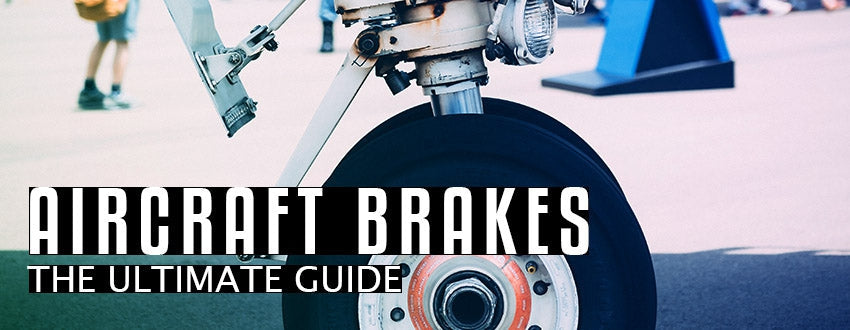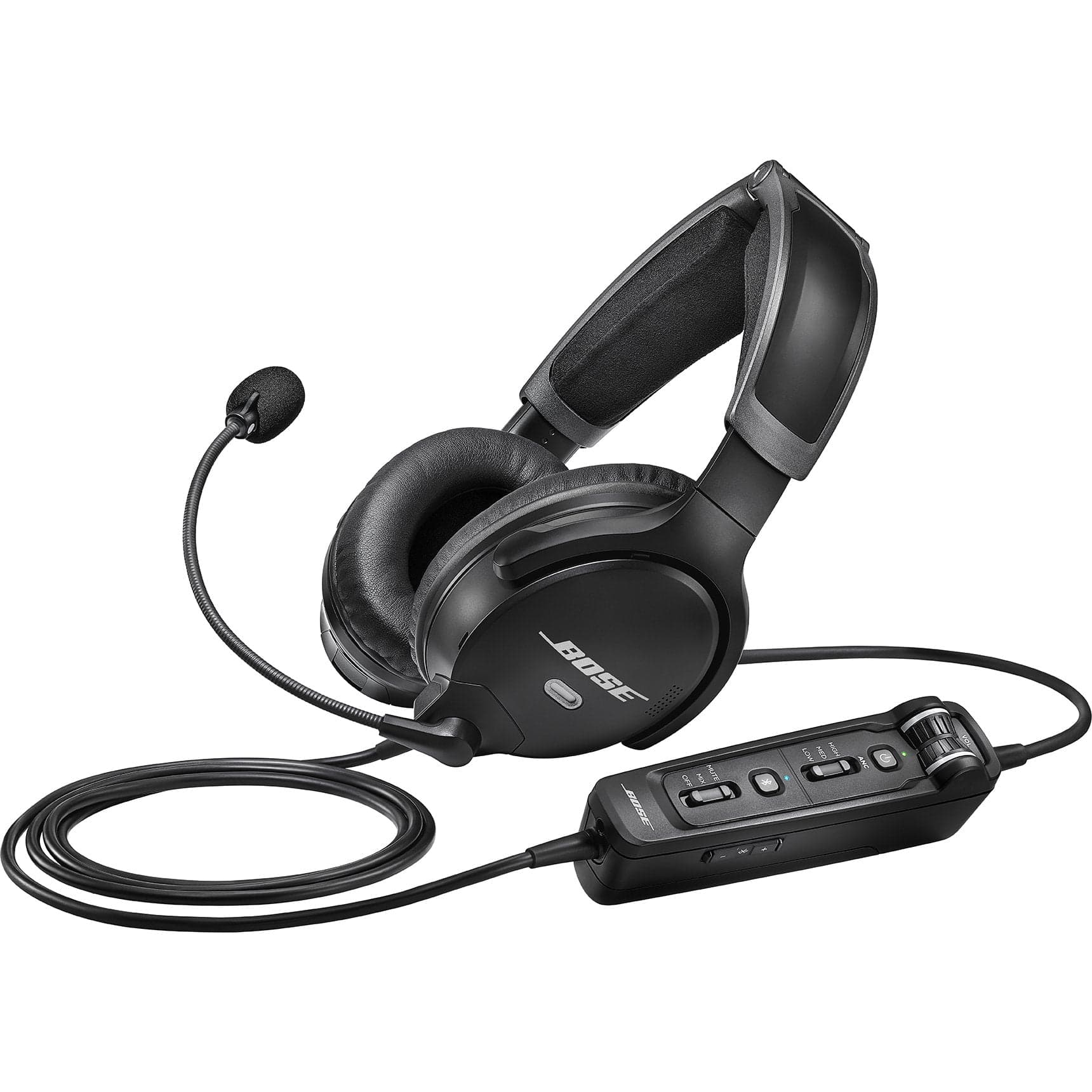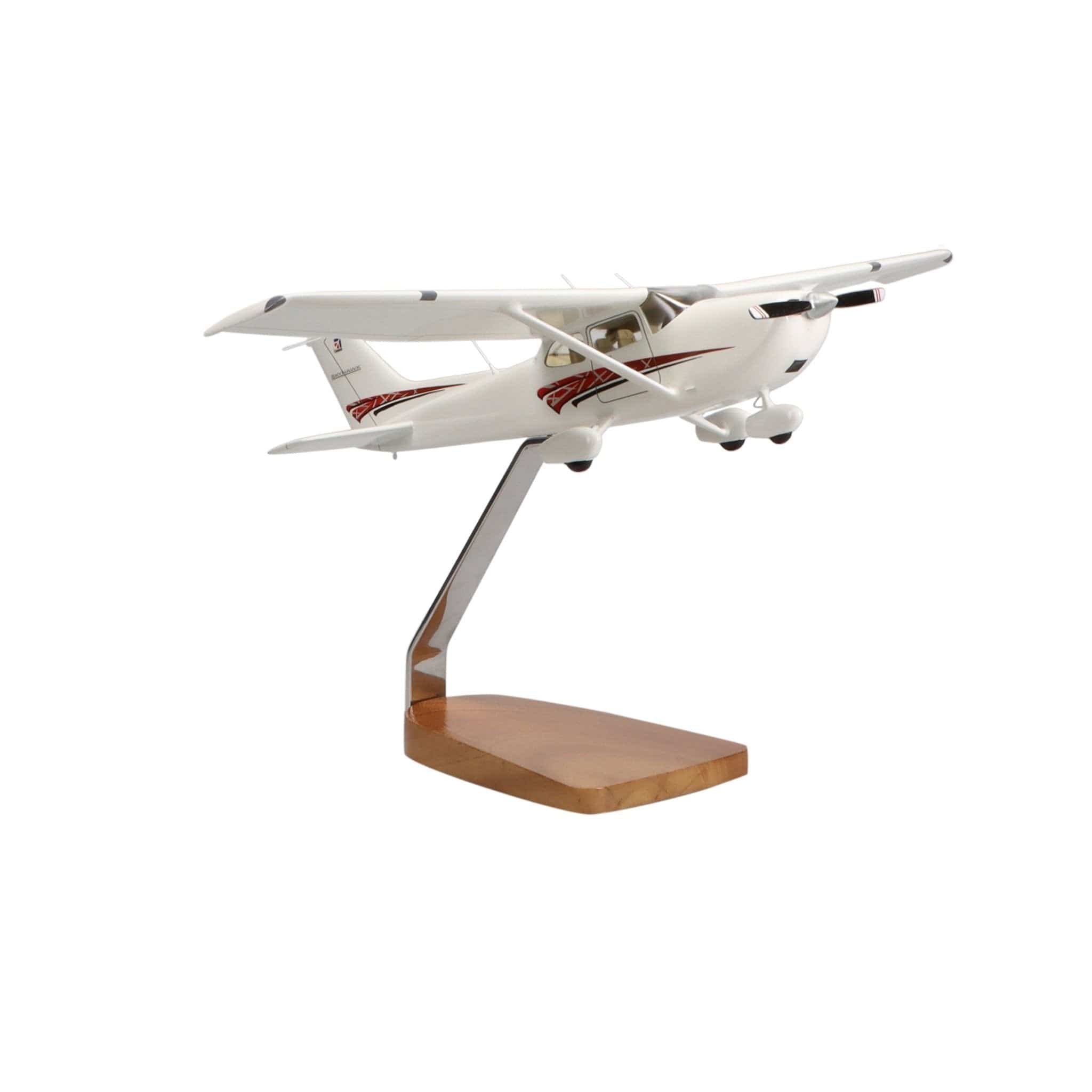If you’re designing an aircraft that travels at speeds capable of generating sustained flight, it only stands to reason that you would build in some sort of means of stopping said craft when it returns to the ground, right?
Well, not necessarily. Although the need for brakes on aircraft seems straightforward and self-explanatory to us now, during the initial days of aviation, aircraft had no braking system – see the Sopwith Camel, for example.
Designers, builders and pilots relied on a combination of the relatively low aircraft speeds of the time paired with friction generated by soft airfields and tail skids to naturally slow and stop aircraft.
It wasn’t until after World War I, as aircraft speeds increased and more paved runways emerged, that these brake systems gained in popularity. Like other aircraft systems, Brakes on aircraft have continued to evolve and improve over the last century.
Together let's explore the history of brakes. This is fascinating journey that spans over a century of technological advancements. From humble beginnings with a rudimentary braking system to the sophisticated hydraulic braking system used in modern aircraft, the evolution of brakes on aircraft has been instrumental in enhancing aviation safety and performance.
Let’s get started!

History of Brakes on Aircraft
Many early brakes for aircrafts consisted of a single lever that mechanically transmitted the brake control input through cables to drum brakes located on the main wheels and sometimes on the nose wheel as well.
All the brakes were linked to the same controller, so they were all applied at the same time and with the same force. Since the input was manually transmitted, the system was inefficient and only worked well on smaller aircraft. The brake drums also wore out and needed to be replaced relatively quickly.
Another variation of brakes – popular between the 1930s and 1950s – was expander tube brakes. This type of brake system got its name from the flat, fabric-reinforced neoprene tube whose surface was covered with a sort of brake lining material called brake blocks.
The tube was fitted inside an iron brake drum and contained a metal nozzle through which pressurized hydraulic fluid entered when the brakes were activated. As the fluid expanded the tube, the brake blocks pressed against the drum causing friction and slowing the wheel.
Overall, expander tube brakes worked reasonably well, however their cold weather performance was less than optimal, and in high temperatures they were prone to swelling and leaking then dragging inside the drum after the brakes were released.
These original options were better than nothing, but clearly an improved aircraft braking system was needed.
Modern Aircraft Braking Systems
Today, aircraft braking input is primarily hydraulically transmitted with hydraulic pumps providing the necessary fluid pressure to support the expansive systems of brakes on large aircraft. Rather than a single lever control that applies equal pressure to both brakes simultaneously, pilots use individual toe operated brake controls located in the top of the rudder pedals.
One control operates the left main wheel brake and the other operates the right main wheel brake. The nose and tail wheels do not have brakes. This individual brake control set-up offers more functionality since left and right main wheel brakes can be applied separately and to varying degrees.
Today’s pilots can use this differential braking capability to their advantage as they steer the aircraft on the ground.
Hydraulic brake activation may be most common now, but as we look to the future, expect more aircraft to transition to lighter electrically activated braking systems. This will eliminate the need for bulky hydraulic fluid systems and pumps.
The drum style brakes that were prevalent through the 1950s have since been replaced with more efficient and effective disc brakes. On a disc brake, the turning wheel assembly and the brake disc or rotor rotate together. When the brakes are applied, a stationary brake caliper resists rotation and creates friction against the disc, thereby slowing the aircraft.
The material composition, configuration and type of disc brakes vary depending on aircraft weight, size and landing speed.
Composition
The rotors of disc brakes are most often made of either iron or steel. The problem, especially for larger, heavier aircraft is that when activated, the brakes are subject to high levels of kinetic energy and its resulting heat. Steel and iron brakes will begin to “fade” and lose efficiency as their temperature increases. They are also relatively heavy.
To reduce weight and improve brake efficiency on large, high performance aircraft, designers have been making the switch to carbon fiber. This new, improved construction offers improved high-heat performance while simultaneously decreasing the overall weight of the aircraft’s brake system. In fact, carbon fiber brakes are roughly 40% lighter than standard iron or steel disc brakes.
This means a potential weight savings of several hundred pounds on large aircraft. The thermal benefits are impressive. Carbon fiber can handle 2-3 times as much heat as steel. A carbon fiber rotor can also dissipate residual heat more rapidly than its steel counterpart. Finally, the carbon fiber composition is stronger and more resilient. It can retain its dimensions even at very high temperatures.
From a longevity and maintenance perspective, another key benefit of carbon fiber over steel is that the carbon fiber brake lasts about 20-50% longer.
As technology improves and the price of carbon fiber goes down, expect to see this type of brake become even more widespread.
Type
Modern brake systems come in 4 main types depending on your aircraft’s size, weight and speed:
Single Disc
These types of brake discs are smaller, lighter aircraft will have single-disc brakes in either a fixed or floating configuration. With a single disc brake, hydraulic pressure pushes against pistons located in a non-rotating caliper. These pistons press brake pads against both sides of the disc, creating even levels of friction and slowing the aircraft.
On a floating single disc brake setup, the friction is generated by brake linings or pucks. Half are located on the inside of the brake caliper and half on the outside. The inside pucks are stationary, while the outer pucks move with the pistons. The brake disc floats laterally between these sets of pucks. As the brakes are applied, the outer pucks contact the disc, the disc slides inward, and the inside pucks also make contact to slow the wheel.
In a fixed single disc configuration, the disc is bolted to the wheel and only the caliper and brake linings float laterally depending on the pressure which is being applied. When the brakes are applied, the linings move towards the disc and make contact to slow the wheel.
Dual Disc
If the friction generated by a single disc brake isn’t enough to stop the aircraft, a second disc is added to the setup. This is called a dual disc configuration. In a dual disc brake system, each wheel has two discs rather than one. The discs are connected by a center carrier with linings on each side. When the brakes are applied, the center carrier linings make contact with both discs and slow the wheel.
Multiple Disc
Large, heavy aircraft need something even more powerful than a dual disc system. These aircraft use a multiple disc brake system which is built on an extended bearing carrier. The carrier holds a series of alternating steel stators and copper or bronze-plated discs. The stators are a type of flat plate covered in wearable brake lining material which is designed to press against the rotors. Hydraulic pressure on the piston compresses the entire stack, generating high levels of friction and heat to slow the wheel rotation. This system is paired with power boost master cylinders or power brake control valves.
The problem with the multiple disc system is that the rotors and stators are thin and heat up quickly. Since they are also inefficient with heat dissipation, the residual heat gives them a tendency to warp.
Segmented Rotor
The next-generation option for braking systems on large, heavy, and high performance aircraft is segmented rotor-disc brakes. These are a variation of the multiple disc system, but with some important modifications and upgrades to control the buildup of heat and aid in its dissipation.
The brake rotors in a segmented rotor-disc brake system have a fixed high friction brake linings make contact with rotors to slow the wheel. Rather than being a solid, flat disc, the rotors of a segmented system have slots or segmented spaces cut into them to allow the heat an avenue of escape. The cutouts also help to prevent or reduce the potential for warping under high heat conditions.
This type of aircraft braking system has become standard on air carrier and high performance aircraft.
Most common problems with the brakes on aircraft
Modern brakes are becoming more and more reliable and low maintenance. Of course, even under normal flight conditions, your brakes are subject to extreme stress. This can cause damage, wear and potential malfunctions.
The most common brake problems you may encounter include:
Chattering
Your brakes can generate a chattering or even a squealing sound if the brake lining is not pressing smoothly and evenly against the brake disc. This uneven pressure can be a result of a warped disc or a misalignment.
Dragging
When you let off of the brake pedal, you should feel the wheel begin to move freely as the brake linings completely retract from the brake disc. If there is a residual dragging sensation, this could be caused be a malfunction of the return mechanism, a weak return spring, a warped disc, or air in the brake fluid line. If you are experiencing brake drag and the technician is unable to find any other problem, but the temperature is hot, the tech will likely recommend bleeding the brakes to remove the extra pressure caused by hot air. This should resolve the dragging issue.
Overheating
The final common issue with aircraft brakes is overheating. Although as a pilot, you are taught to use your brakes in a manner that avoids generating excess heat, situations like aborted takeoffs or other high-braking maneuvers can put severe strain on your brakes and cause them to overheat. If your brakes have been subjected to an overheating situation, they should be carefully inspected for damage by a licensed technician.
Take Away
While not considered necessary for early planes, brakes are a vital component for modern aircraft. The aircraft brake system has continued evolving over the last century with new materials and designs that help to slow down even the largest, fastest of aircraft.
Among the key elements are the toe brakes, which allow precise control during taxiing and landing maneuvers.
Also, the anti-skid system, integrated into the brake system, plays a crucial role in preventing skidding and maintaining optimal traction on the runway, especially during adverse weather conditions.
Though most of the details are left to the mechanics, as with all of our aircraft's key systems, it is wise to have a baseline understanding of what type of brake system we have, how it works, and the potential problems we can encounter while in the cockpit.
Understanding the operation of toe brakes and the anti-skid system empowers pilots to make informed decisions and ensures safer landings in various challenging situations.















